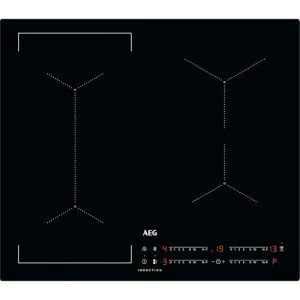Induction Hob Benefits: A Smart Choice for Modern Kitchens
Induction hobs have gained substantial traction in recent years as a cooking option in modern kitchen areas. With their sleek design and advanced technology, they not just elevate the visual of kitchen spaces however likewise use a myriad of benefits to both amateur cooks and professional chefs. This post looks into the different advantages of induction hobs, how they operate, and why they're ending up being a popular choice for households worldwide.
Understanding Induction Hobs
Before jumping into the benefits, it is vital to comprehend how induction hobs function. Unlike traditional gas or electric ranges that rely on direct flame or glowing heat, induction hobs utilize electro-magnetic fields to directly warm pots and pans. When a compatible pots and pans product-- such as cast iron or stainless-steel-- makes contact with the hob, the induction coil creates heat, cooking the food effectively.
Key Features of Induction Hobs
- Immediate Heat Control: The minute the cookware is put on the hob and switched on, heat is created quickly. This enables for fast heating and accurate temperature level control.
- Energy Efficiency: Induction cooking is extremely efficient, as approximately 90% of the heat produced is transferred to the pot, minimizing energy loss.
- Precaution: Most induction hobs come geared up with security features such as automated shutoff and child lock systems. ovensandhobs.uk remains cool to the touch, lowering instances of burns.
Advantages of Induction Hobs
Here are some compelling factors to consider setting up an induction hob in your kitchen area:
1. Energy Efficiency
Induction hobs substantially decrease cooking times compared to gas and electrical hobs. This energy-saving advantage is not only advantageous for the environment however likewise results in lower energy expenses.
Benefits:
- Reduced cooking time
- Lower energy usage
2. Faster Cooking
Because induction hobs warm up quickly, they permit cooks to prepare meals in less time. This can be specifically advantageous when meal prepping or quickly preparing meals on hectic weeknights.
Bottom line:
- Immediate heating
- Quick response to temperature level changes
3. Safety Features
Induction hobs are designed with user safety in mind. The cooking surface stays relatively cool, decreasing the risk of unintentional burns or fires.
- Automatic Shut-Off: When pots and pans is gotten rid of, the hob immediately shuts off, improving security.
- Cool-to-Touch Surface: The hob itself stays cool, minimizing the threat of burns.
4. Easy to Clean
Standard gas and electric hobs can be challenging to clean up due to food spills and burnt residues. Induction hobs, with their flat surface area, make cleansing simple and effective.
Cleaning up Tips:
- Use a moist cloth for regular cleaning.
- For tougher stains, specialized induction hob cleaners can be used.
5. Exact Temperature Control
Induction hobs offer exceptional temperature control, allowing users to simmer, burn, and cook to perfection with ease. This offers greater adaptability in cooking techniques.
Cooking Techniques:
- Simmering sauces
- Scorching meats
- Boiling pasta
6. Elegant Design
Many induction hobs feature modern designs that can quickly suit any kitchen area decoration. They are available in various sizes and styles, from single burners to extensive, multi-zone models.
Comparison of Cooking Methods
Below is a table illustrating the key differences between induction hobs, gas stoves, and electric stoves.
| Function | Induction Hob | Gas Stove | Electric Stove |
|---|---|---|---|
| Heat Method | Electro-magnetic | Flame | Electric Resistance |
| Performance | As much as 90% | Around 40% | Around 70% |
| Safety | High (cool surface) | Moderate | Moderate |
| Speed | Fast | Moderate | Slow |
| Cleaning | Easy | Tough | Moderate |
Cooking Considerations
When considering the switch to an induction hob, there are a few factors to consider to remember:
- Cookware Compatibility: Only ferrous (magnetic) materials work with induction hobs. Cast iron or stainless steel pots and pans is ideal, while glass, aluminum, and copper typically need a special magnetic base.
- Cost: While induction hobs might be more expensive in advance than traditional stove types, their efficiency and sturdiness typically make them a rewarding financial investment.
FAQs
Q1: Can I utilize my existing cookware on an induction hob?A1: Only ferrous products will work. If a magnet adheres to your pots and pans, they must be suitable. Q2: Are induction hobs safe for children?A2: Yes
, with features like automatic shut-off and a cool surface, they are designed to be safe. Nevertheless, adult supervision is constantly recommended. Q3: Do induction hobs produce infrared radiation?A3: No, induction
hobs do not produce infrared radiation;
they solely create heat through magnetic fields. Q4: Can you cook with induction hobs throughout a power outage?A4: Induction hobs require electrical energy to run, so they will not work during a power outage.
Induction hobs are an engaging cooking alternative that embodies the ideal mix of effectiveness, safety, and modern design. As technology continues to evolve in the cooking world, induction cooking represents a sensible option for present-day cooking areas. With the many benefits they use, induction hobs are undoubtedly a smart investment for both culinary enthusiasts and daily cooks alike. Whether you're fighting with your existing setup or just aspiring for a more structured cooking experience, an induction hob might simply be the service you've been looking for.

